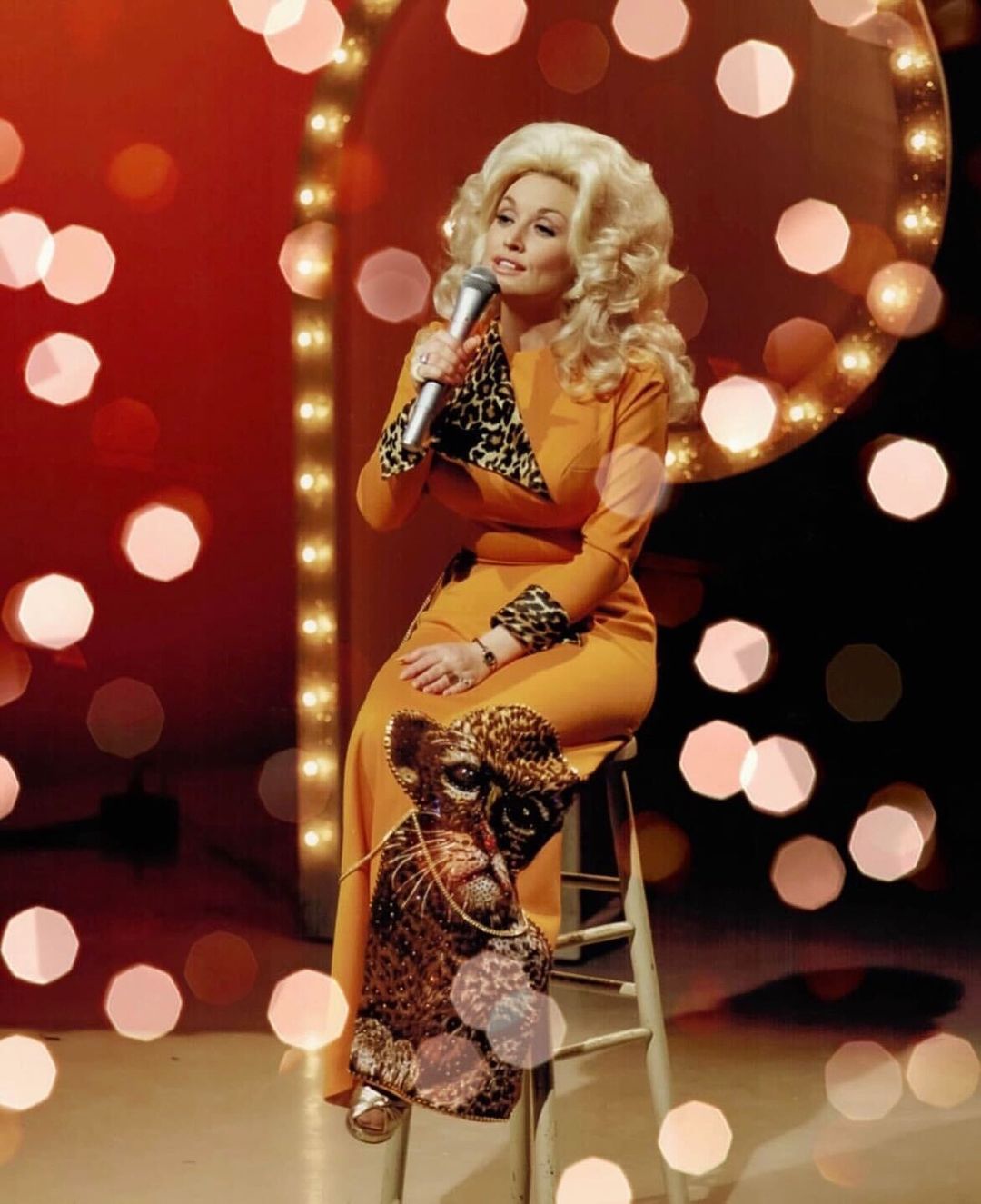
Dolly Parton’s “Rockstar”: A Pivotal Moment in Her Legendary Career
For over 50 years, Dolly Parton has cemented her status as one of country music’s most beloved icons. Known for her signature high-pitched vocals and songwriting prowess, Parton rose to fame in the late 1960s and 1970s with a string of hit country singles and albums that celebrated her Appalachian roots. However, by the early 2000s, Parton had proven herself to be much more than just a country star – she was a versatile artist willing to experiment with different genres. Her 2004 album “Rockstar” demonstrated this evolution most prominently, incorporating elements of rock and pop music into her signature sound in a bold career move. While a risk at the time, “Rockstar” paid off both critically and commercially, reaching new audiences and paving the way for Parton’s continued genre experimentation and artistic growth in the later stages of her illustrious career.
On the surface, “Rockstar” marked a clear shift away from Parton’s traditional country sound that had brought her fame. Produced by the famed Linda Perry, known for her work with artists like Pink and Gwen Stefani, the album featured a harder rock edge than Parton’s previous work. Songs like “I’m a Rockstar” and “Better Get to Livin’” boasted driving electric guitar riffs and a grittier vocal delivery from Parton compared to her past country-pop crossover hits. However, Parton’s unmistakable melodic sensibilities and lyrical storytelling gifts were still at the core. Tracks like “Why’d You Come in Here Lookin’ Like That” and “All Used Up” blended Parton’s country roots with infectious pop-rock hooks. While taking creative risks, Parton stayed true to her artistic strengths rather than fully abandoning her country foundation.
This balancing act paid off both critically and commercially. Upon its release, “Rockstar” was praised for showcasing Parton’s fearless willingness to experiment outside the boundaries of country music. AllMusic critic Thom Jurek wrote that the album “finds Parton pushing herself into uncharted musical territory without losing sight of who she is as an artist.” The album reached #17 on the Billboard 200 album chart, Parton’s highest placement at the time, a testament to her ability to attract mainstream audiences beyond the country genre. Leading single “Why’d You Come in Here Lookin’ Like That” cracked the top 40 of the Billboard Hot 100 pop chart. This marked one of Parton’s most commercially successful albums of her entire career in terms of crossover appeal.
The success of “Rockstar” highlighted Parton’s evolution as a creative force unwilling to rest on her laurels. By collaborating with rock producer Linda Perry, Parton demonstrated she was not afraid to work with new voices to keep her music feeling fresh and relevant. In an interview with Billboard at the time, Parton said of the album’s direction: “I wanted to do something a little more current, a little more now…I wanted to push myself vocally as well as musically.” Working with Perry pushed Parton to deliver more powerfully raw vocals than ever before, a testament to her continual growth as a performer even after decades in the industry. Songs like “All Used Up” and “Better Get to Livin’” allowed Parton’s vocals to truly soar over driving rock arrangements.
While taking her sound in a new direction, “Rockstar” also affirmed Parton’s status as one of music’s most enduring artists capable of genre fluidity. As journalist Touré wrote in Rolling Stone: “Rockstar proves that Dolly Parton, at 68, remains a vital, unpredictable artist unafraid to experiment and evolve.” Parton had proven time and again she could not be confined to any one genre through her eclectic catalog. However, “Rockstar” marked one of her most overt genre shifts that paid off both creatively and commercially. Its success allowed Parton the freedom to continue pushing boundaries on later albums like those produced by Steve Summers and Kent Wells that incorporated elements of Americana, folk, and pop.
The impact of “Rockstar” also extended to Parton’s legacy as one of country music’s most revered icons. While always considered a trailblazer willing to blend genres, the album’s mainstream pop rock success helped cement Parton’s status as a pioneer. As journalist Robert Hilburn wrote in the Los Angeles Times: “Parton has spent her career expanding the parameters of country without disrespecting its roots. ‘Rockstar’ simply takes her ongoing evolution a step further.” The album inspired a whole new generation of artists to look to Parton not just as a country legend, but as a shape-shifting musician unafraid to break rules. Younger artists like Kacey Musgraves, whose 2018 album “Golden Hour” blended genres much like Parton, have cited her willingness to experiment as an influence.
Over 15 years since its release, “Rockstar” remains one of the seminal moments that shifted the trajectory of Dolly Parton’s already storied career. By incorporating elements of rock and pop but staying true to her songwriting strengths, the album was both a creative and commercial success that expanded Parton’s audience. It highlighted her lifelong mission to grow as an artist willing to work with diverse producers and take new musical risks. Most importantly, “Rockstar” cemented Parton’s legendary status not just as a country icon but as one of music’s most enduring creative forces capable of continuous evolution. Its impact can still be felt today as Parton, now in her 70s, continues putting out new music that blends genres and pushes creative boundaries.





